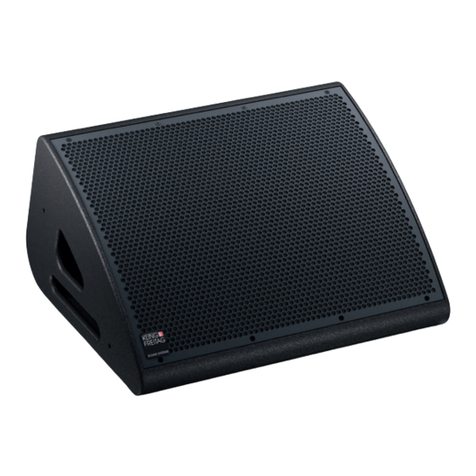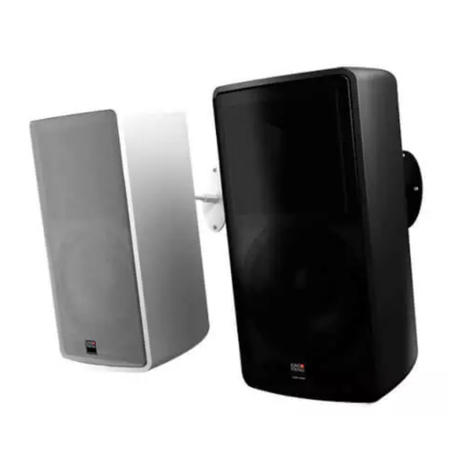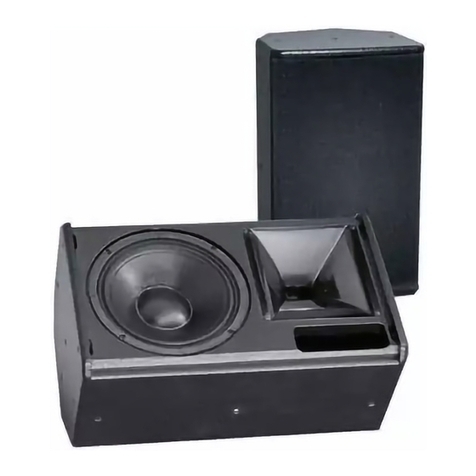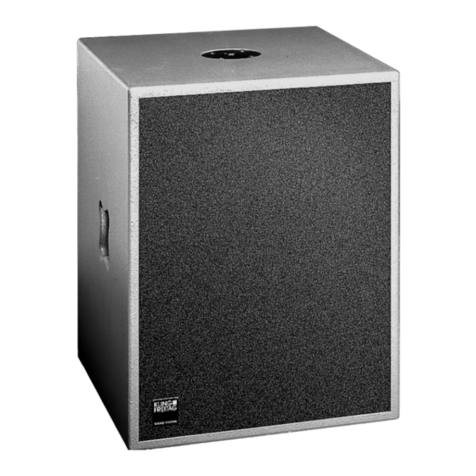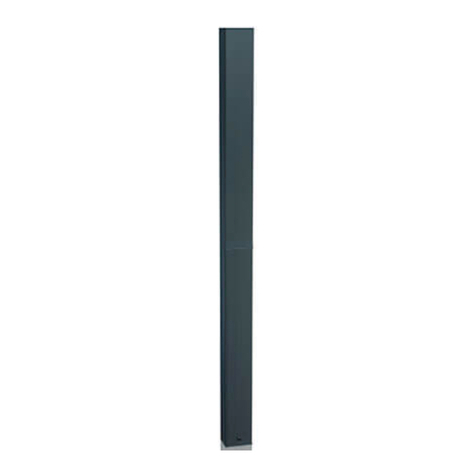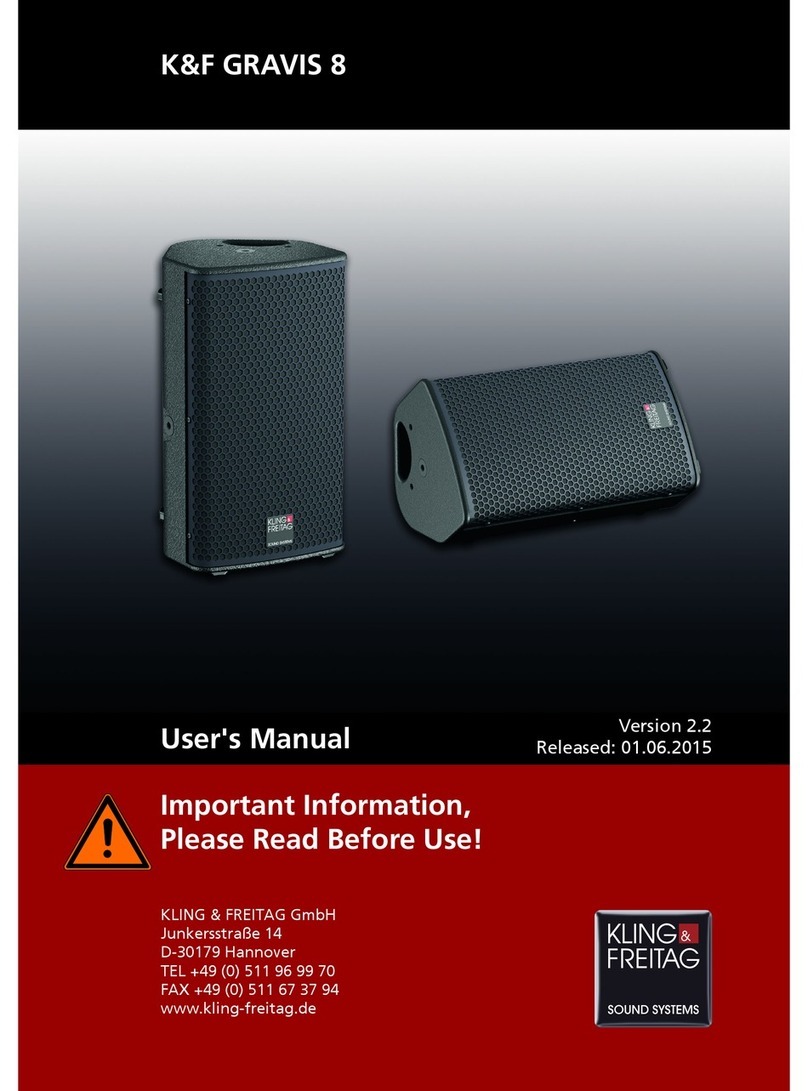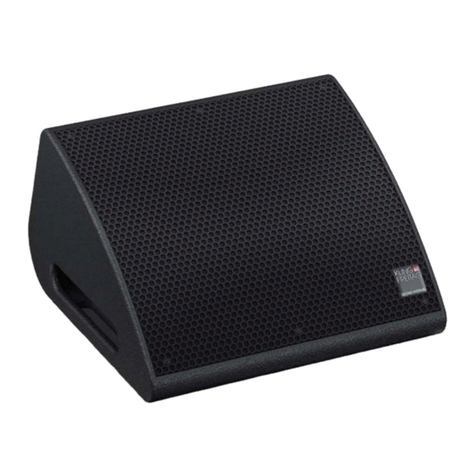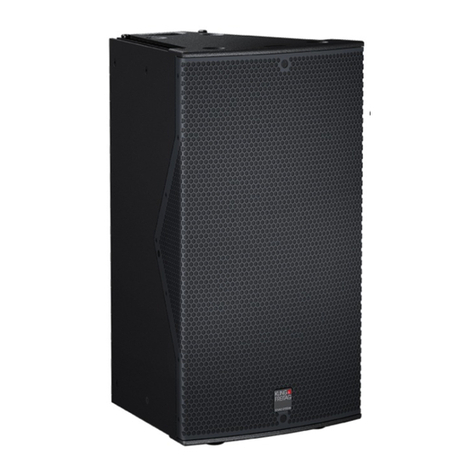
User's Manual K&F NOMOS XLC
KLING & FREITAG GMBH © 2017 Version 4.6 Page 7 of 22
Caution
Run the cables in a way that nobody can trip over them.
At least 2 people are necessary to carry the speaker.
Preventing Hearing Damage
Keep your distance from operating speakers. Even loudness levels of approx. 90 dB - that you
subjectively judge as being low - can lead to hearing damage.
3.1 Safety Instructions for Stacked Setups
Warning
Falling speakers pose the threat of fatal injuries to people near them!
Be sure to follow the relevant national specifications, norms, and safety regulations.
Always make sure that a sufficient safety level is still given, even when outside forces have
an additional impact on the stacked speakers. Before setup, carefully ascertain if there are
any possible outside forces that could result in the system falling over. (Slant of the ground /
the bearing capacity of the ground / wind / person or vehicle impact, etc.). A technical expert
who is responsible for the setup must evaluate and determine necessary measures (including
calculating the statics). If necessary, obtain expert proof of stability.
Stacked systems may not fall over even if they are inclined by 15° in each direction. If this
requirement is not fulfilled, then it is necessary to take steps to achieve compliance. Possible
measures include strapping it to an appropriate base structure or fastening it using safety
straps. A planned tilt of the loudspeakers ist not permissible. In calculations, the tilted setup
serves the purpose of levelling out unevenness.
With the set-up systems for which you cannot verify the structural safety without safeguards,
you must secure them to prevent sliding or tipping in order to provide proof of this safety. To
secure the system from tipping over, use water tanks or floor bolts. Other possible measures
include strapping it to a suitable substructure or tying it using safety straps.
For outdoor and trade fair venues in which wind loads must be considered, additional proof
of stability is necessary.
Make sure that the stacking feet of subwoofers stacked on top of one another are securely
positioned in the grooves of the lower speaker.
If you place a top speaker on a NOMOS XLC you must always strap the speakers to one
another and secure them from falling over.
3.2 Protecting the Speakers / Operating Safety
NOMOS XLC speakers may only be used in combination with a K&F SystemAmp/SystemRack.
System Requirements for Use
In general, audio signals must not be overdriven. This may be caused by mixing consoles,
equalizers, effect equipment, etc. and should be indicated on this equipment. When a power
amplifier is overloaded at the output (clipping), then the amplifier activates a clipping
warning signal. In any case, the signal must be reduced as soon as it sounds unnaturally
distorted.
The following signals may damage the speakers:
• permanent high-level signals with high frequency and continuous noise from feedback,
• permanently distorted high-level signals,
• noises, which occur when the amplifier is on while equipment is being connected,
disconnected or switched on.
Do not install devices in any of the following places:
• where the devices are permanently exposed to direct sunlight.
• where the devices are exposed to high moisture or rain.
• where the devices are exposed to strong vibrations and dust.
